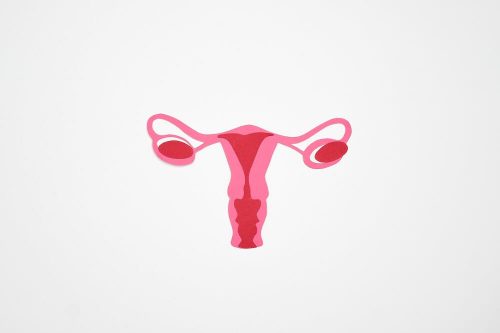The moment of birth is very special and much anticipated, after all, it’s finally time to meet the baby. Some mothers prefer to be actively involved in the process through a natural birth, while others opt for a cesarean, usually out of fear of pain and for its practicality. Both alternatives have their advantages and disadvantages and, despite the right to choose, the decision should be made together with the doctor. That’s because there are a number of factors that can make one option safer than the other for the mother and baby, as we will see below. The main goal is to ensure a smooth delivery and, when there are no contraindications, the choice is up to the woman. When deciding, the doctor should guide and mention some pros and cons, as well as warn about possible changes of plans at the time of birth. Check below some basic characteristics of natural birth and cesarean section. Take the opportunity to reflect and list questions to discuss with your obstetrician.
- Natural birth: what it is, pros and cons
- Cesarean section: what it is, pros and cons
- Is it really possible to choose?
Natural birth: what it is, pros and cons
Natural birth is when childbirth occurs through the mother’s vagina. It is the “normal” outcome of a pregnancy, without a surgical procedure, but with possible medical interventions such as anesthesia, nerve block, or amniotomy, for example.
Amniotomy is a practice aimed at purposely and artificially rupturing the amniotic sac, in order to speed up labor.
It is divided into 3 phases and begins with labor:
- Phase 1 – the first is dilation, characterized by uterine contractions that dilate the cervix and facilitate the descent of the fetus. Initially, contractions are infrequent and irregular, evolving in intensity and becoming shorter in interval.
- Phase 2 – next comes the expulsion stage, when the cervix reaches 10 cm dilation and begins to allow the baby to pass through the birth canal. Strong, regular contractions help the baby through the process.
- Phase 3 – The third phase is placental delivery characterized by the expulsion of the placenta after birth, the organ that connected the baby to the mother.
With natural birth, the baby’s arrival to the world is also less stressful, as their body receives a kind of massage along the birth canal, creating a sensation of touch and making them less startled by the hands of the person receiving them.
The pain of labor is cited by many women as the main reason for opting for cesarean section. And in fact, it can be quite painful. However, the woman’s body is prepared and capable of this process and there are various medications available to help reduce the pain. Generally, discharge is given 24 hours after birth. The puerperium, the mother’s full recovery period, takes about 40 days. Sexual intercourse should be avoided for 30 to 40 days and physical exercise only about 15 days postpartum. More moderate activities like walking and yoga are usually cleared earlier.
Cesarean section: what it is, pros and cons
Cesarean section, or C-section, is a surgical procedure in which the baby is delivered through the mother’s abdomen. For this, the woman receives anesthesia and the doctor makes a cut about 2 or 3 cm above the pubic bone. The incision measures about 10 cm and the tissue layers are opened until the uterus is reached. Once located, the baby is gently pulled out and the umbilical cord is cut. The placenta is then removed and the incision is stitched closed.
Unlike natural birth, breastfeeding is more difficult after choosing a cesarean and the scar from the incision, though small, remains, which can be unpleasant for some women. Furthermore, infection risks are higher with this type of delivery.
Among the advantages of this option is the fact that it can be scheduled, meaning the date and time of the baby’s birth can be chosen by the family from the 39th week of pregnancy. Labor is also short and the woman feels no pain during the process, only some contractions at the beginning.
Is it really possible to choose?
According to guidelines from the WHO, World Health Organization, the rate of C-sections should not exceed 15% of births in a country. In Brazil, however, this rate is very high and concerning, since the life risks are greater compared to natural birth. The convenience and practicality of cesarean section are factors that drive up this rate in the country. However, natural birth should be prioritized by doctors in all circumstances, except in situations of risk.
Recently, a very interesting study was published on the Trocando Fraldas website with updated information on C-section rates in Brazil, region by region.
During a normal and uncomplicated pregnancy, when there are no contraindications, the woman can choose the birth option that suits her best. The doctor will provide all the information, advantages, and disadvantages of each type during their discussion to help with the decision. However, there are situations in which the decision is medical, as the mother’s or baby’s life might be at risk. The choice for natural birth should be reconsidered when:
- problems occur with the placenta such as detachment or adhesion to the uterine wall;
- the baby is positioned in a way that makes extraction difficult;
- the mother has active genital herpes, AIDS or other conditions like hypertension, heart problems or uncontrolled diabetes, for example;
- the baby is very large and heavy, with a body mass index above 25kg/m2;
- the mother has had previous C-sections, two or more, or has had surgery on the uterus.
In addition, it’s important to highlight that even if a natural birth is chosen, changes of plans can happen during the process, which may require a C-section to ensure the pregnancy’s viability and to avoid risking the lives of mother and baby. Thus, during labor, for example, if there is no progress in contractions or dilation large enough, it may be necessary to perform a cesarean section, even if natural birth was the original choice.













